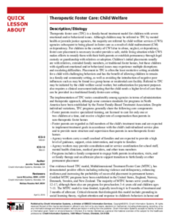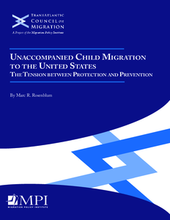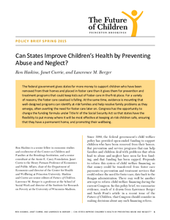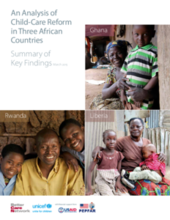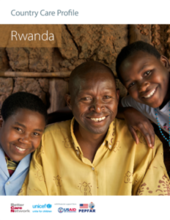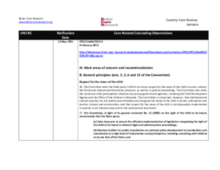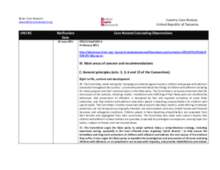Displaying 1011 - 1020 of 1787
In this “Quick Lesson About Therapeutic Foster Care,” the author provides a description of, and background information on, therapeutic foster care in the United States, an overview of national statistics regarding therapeutic foster care, and an overview of the risk factors and symptoms associated with children in need of therapeutic foster care.
This report examines the policy challenge in the United States of balancing protection and immigration enforcement in the recent unaccompanied child migration “crisis” in the US.
This brief from the Future of Children Journal, a collaboration of the Woodrow Wilson School of Public and International Affairs at Princeton University and the Brookings Institution, outlines the current state of the Child Welfare System in the United States, particularly federal funding to individual states’ child welfare systems.
This paper offers strategic guidelines to improve alternative care for children younger than six years of age, who are under protective measures.
This report summarizes the care-reform process of three sub-Saharan African countries – Ghana, Liberia and Rwanda.
This country care profile provides an overview of key lessons learned in the children’s care reform process in Rwanda, including successes, challenges and areas for progress, and gaps in learning and best practice.
In 2015, the Parliament of the Republic of Uganda considered the Children Amendment Bill, which has several implications for children’s care in the country. The object of the bill is to amend the Children Act Cap. 59, enhance protection of a child, provide for the guardianship of children, provide for inter country adoption, prohibit corporal punishment, and provide for related matters.
In this article, the author addresses the topic of child neglect, or allegations thereof, as it relates to children and families in the Child Welfare System in the United States.
This country care review includes the care-related Concluding Observations adopted by the Committee on the Rights of the Child as part of its examination of the consolidated third and fourth periodic reports of Jamaica (CRC/C/JAM/3-4).
This country care review includes the care-related Concluding Observations adopted by the Committee on the Rights of the Child as part of its examination of the third to fifth combined periodic reports of Tanzania (CRC/C/TZA/3-5).

